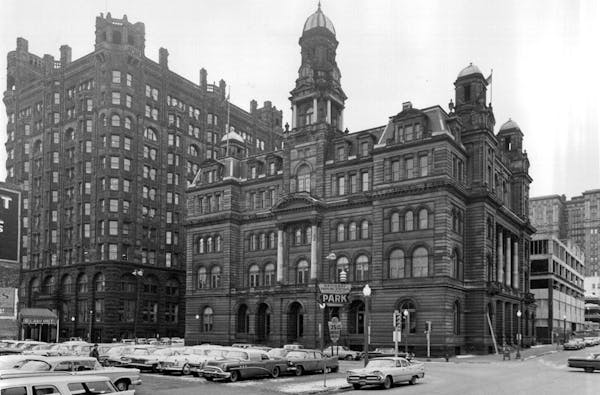It's a real mystery why a design style called Brutalism didn't catch on.
If you haven't heard of the style, you might think, "Hmm, sounds nasty. Mean. Cruel. You know, brutal." In my opinion, you'd be right.
Brutalist architecture takes a nod from influential architect Le Corbusier's beton brut, or "raw concrete" work. From the 1950s to the mid-1970s, institutions such as government and universities loved the Brutalist aesthetic. It was powerful. It broke the accepted norms of architecture, including the idea that a building had to be appealing.
When the style was applied to a City Hall, as in Boston, it told you where the power lay. When applied to a housing development (England is uniquely cursed with swaths of concrete, stacking people into dank proletarian storage boxes), it was a way of reminding the citizen that they were units to be managed, not people to be valued.
But, like any style, it had its defenders. And, lately, there has been a spate of pieces in architectural and design journals asking us to reconsider Brutalism.
OK. Let's give it another look.
Nope. Still ugly.
Don't agree with me? Let's look at some local examples.
Riverside Plaza (once known as Cedar Square West) is Brutalist in that it's mostly concrete, and dominates its site with its massive proportions. However, it has a few elements that make it less brutal than it could be.
The color, of course. The panels of primary colors scattered across the facade make it look like the world's largest Mondrian painting. And while the buildings are arranged in monotonous rows, they're right angles to each other. That makes Riverside Plaza look less like a Soviet housing project and more like a walled city built by a colonial occupier. You can probably get in. It's less clear how you'll get out.
If there's a cold Brutalist heart beating in the center of that labyrinth, it's the Plaza courtyard, which looks straight out of a 1971 thesis on "New Frontiers in Humane Correctional Facilities." The empty terrace, the lack of human detail, it's like a ration of communal space granted by an indifferent warden. It seems to show a disregard for those bothersome, scurrying things called people.
The University of Minnesota area has two other high-rise structures in the Brutalist style. The Chateau, a student housing co-op tower, which has the grace of a second-rate 1960s government office building, except it's done in concrete, not steel.
Like most buildings of its style, it can't be bothered to display any form of grace as it rises. Instead, it has that special soupçon of Brutalist flavor: It gets wider at the top. It seems to me that buildings that are wider on top are inherently unnerving.
But the Chateau is almost a filigreed Gothic tower compared to the Malcolm Moos Health Science Tower on the East Bank of campus. Again, the bulk is emphasized at the top.
The building once known as Hennepin County Medical Center or HCMC, isn't exactly Brutal, but it is brusque.
The original 1976 building squats over several blocks. It says many things, but compassion isn't in the top 10. Compare it with the sinuous curves of the newly renovated Hennepin Healthcare Clinic & Specialty Center, and it's obvious the architects understand how beauty lends a building a sense of empathy you just don't get with ton after ton of monochromatic pebbled facade.
That's not to say that all Brutalist buildings are failures.
The university's Williamson Hall, completed in 1977, is a period piece from an unhappy era. The oil shocks of the '70s and the existential weariness of the Cold War can be read in the building's underground design. Like most campus buildings of the era, it looks like a place you'd shoot a dystopian movie where everyone wears gray tunics and has numbers tattooed on their bald heads.
The building has a feature that demonstrates the failure of Brutalism on a tactile level. The walls that jut above ground have a ribs of concrete. If you run into them, you might come away bleeding.
Of all the styles of architecture, it's the only one that's literally painful.
We're lucky we have Brutalist buildings. They're a lesson.
Architecture can be bold and different and break the rules, but it shouldn't require an antibiotic.
![Richard Tsong-Taatarii/rtsong-taatarii@startribune.com Minneapolis, MN;7/20/10;left to right ] At Riverside Plaza complex, residents are awaiting whet](https://arc.stimg.co/startribunemedia/PJBMMB532ERRRR7HQOLGGRXPDY.jpg?fit=crop&crop=faces&w=550&&auto=format)






